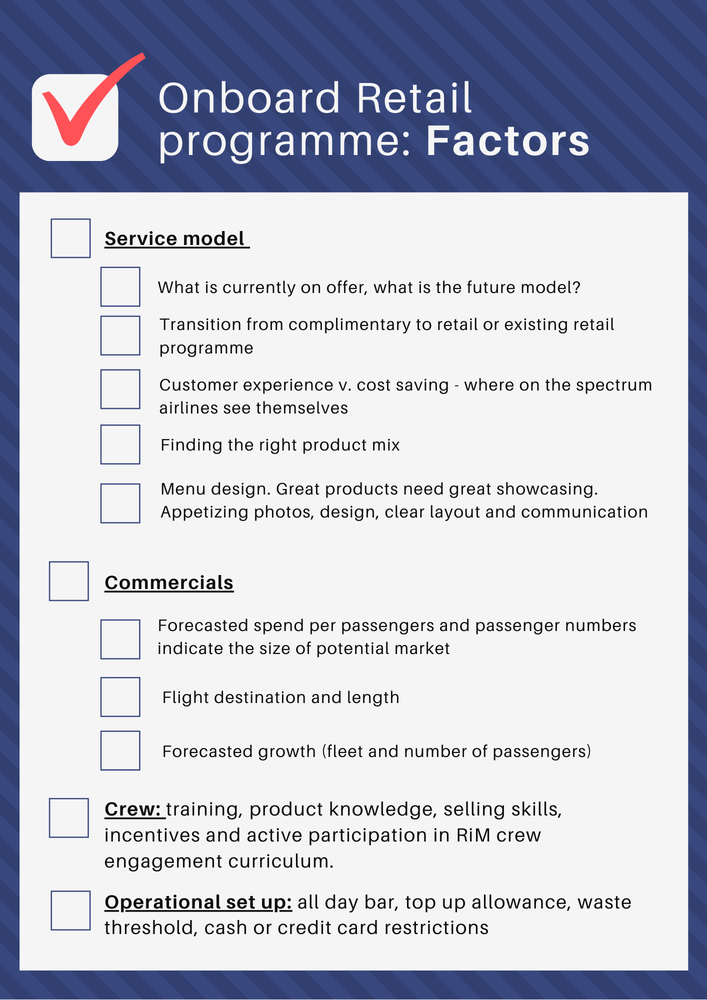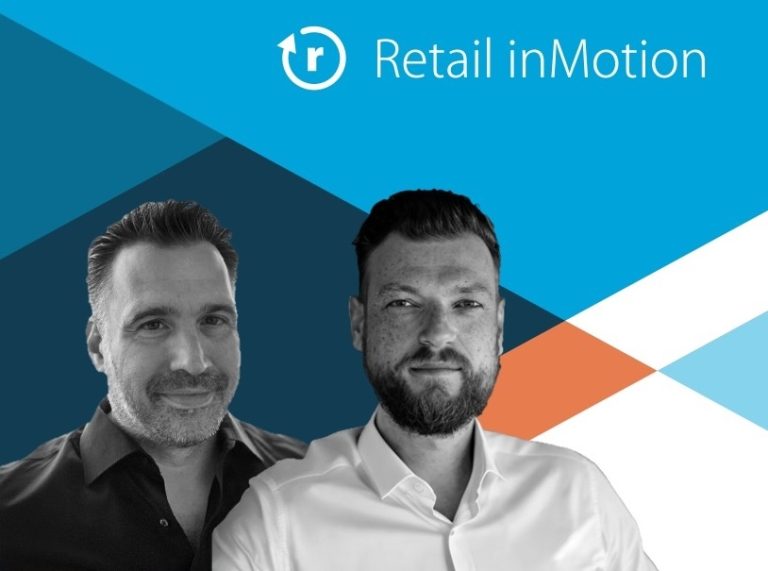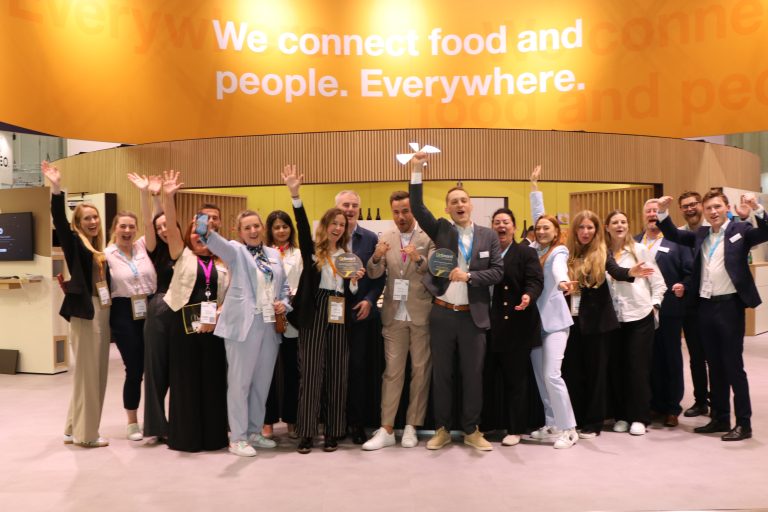A successful onboard aviation retail programme depends on a variety of factors.
Here at Retail inMotion, when we start to work with an airline, we initially clarify goals and objectives and strive to understand why an airline is transitioning from complimentary to retail or what improvements in the current setup they hope to achieve.
First, we need to understand the airline’s motives. Is the airline focused on cost saving or customer experience? To a large extent, an airline’s position on this spectrum will dictate the essential elements in a retail programme, like product range selection, cabin service model, and even operational aspects. There is, of course, no right or wrong approach, just trade-offs for each to be mitigated.
Success at RiM means creating an OBR programme to match the airline’s brand values. Behind the scenes tasks include market research, deep dive with the airline, crew workshops, supplier negotiations, product samplings and more.
However, a successful retail programme means different things to different people. Let’s see what success looks like for all the parties involved:
- For airlines, a successful retail programme is one that solves the airline’s pain points, matches airline values and creates a trusted partnership with the retailer to build value and credibility.
- For passengers, a successful retail programme delivers a seamless onboard experience, with a great choice of products, presented in an imaginative menu card and knowledgeable crew.
- For crew, who are fundamental to successful sales; they need to be recognized, trained, and incentivized.
- For Retail inMotion, creating a successful onboard retail programme is about delivering value with the major stakeholders: passengers, crew, airlines and RiM itself.
Finally, a successful OBR programme will deliver returns for RiM if the external stakeholder needs are addressed.
To ensure that each OBR programme is successful, Retail inMotion takes into consideration the following aspects:










